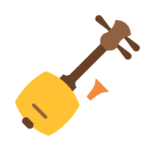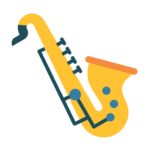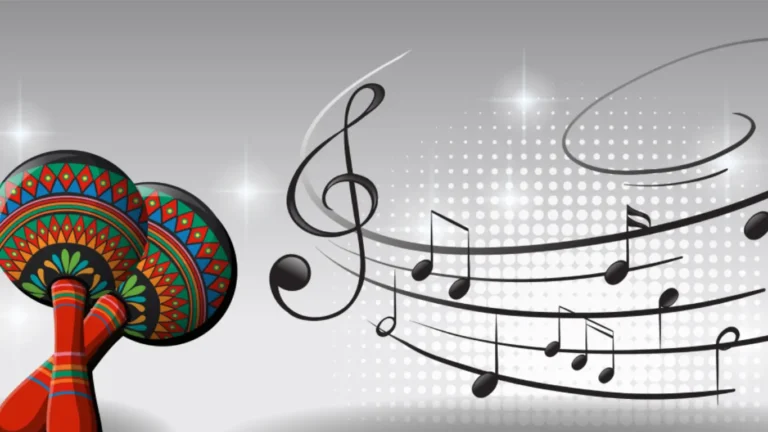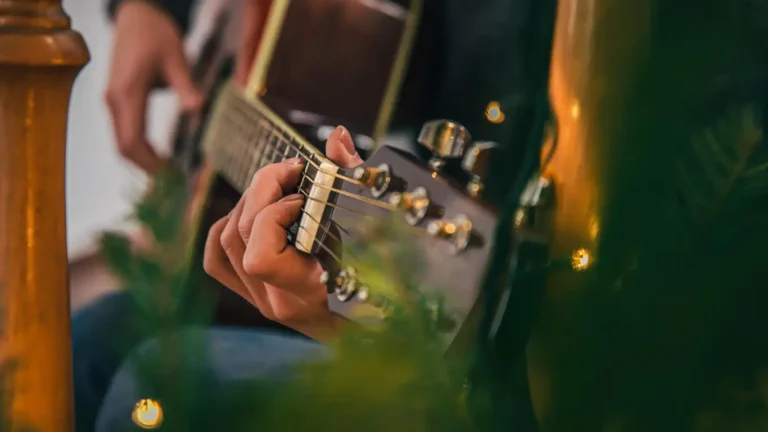Persian music is made up of complicated melodies and is deeply rooted in cultural backgrounds; it is among the oldest and deepest musical traditions on earth. Its root is from today's ancient land known as Iran, an embodiment of many centuries of history, poetry, and spirituality. Music in Iran is not just a compilation of beautiful sounds; rather, it's a living narration-powerful in reflecting the soul of a people, from their struggles, their joy, philosophies, and the way they receive emotions.
From the soft stir of Iran music instruments, it hints at the interpretation of modern Iranian musicians' thinking, and this rich music heritage still ensnares audiences all over the world. Today, Navasaz talks about the rich history of music heritage, so stay tuned.
A Journey Through Time: The Roots of Iranian Music
Ancient Beginnings
The origins of Persian music stretch back millennia, deeply intertwined with the land now known as Iran. The evidence of early Iranian music can be traced to the Achaemenid Empire (550–330 BCE), where music was not only a royal pastime but also integral to rituals and ceremonies. Instruments like the harp, lute, and drums resounded in the royal courts, showcasing the importance of music in Iran to both the aristocracy and the common people. This is the beginning of a deep tradition that would grow and evolve over the centuries.
Classical Persian Music: The Birth of Dastgah
Fast forward to the Sassanian Empire, where music reached new heights. It was during this time that the foundations of Persian classical music were solidified through the creation of Dastgahs—a system of modes that still serves as the backbone of Persian classical music today. Musicians like Barbad laid the groundwork for the intricate radif system, the soul of Persian music, which has been passed down through generations of masters.
Read More: Music Activities for Adults
Women in Persian Music
While Persian music has a rich historical legacy, women in Persian music today are playing a pivotal role in shaping its future. From the rise of legendary performers like Googoosh—who broke through cultural barriers—to contemporary artists like Shahrzad Sepanji and Sima Bina, women are transforming traditional Iranian music and propelling it into the modern era. They are leading the way in classical music, folk traditions, and fusion genres, proving that Iranian music is not just a male-dominated art form but a shared cultural heritage.
- Googoosh is an icon of modern Persian pop music, bringing Iranian music to international audiences.
- Mahsa Vahdat continues to enchant listeners with her beautiful vocal renditions of Persian classical songs, combining ancient and modern influences.
This new era is about redefining Persian music—where both female vocalists and instrumentalists are breaking boundaries and influencing the global soundscape.
Read More: Instruments Like Handpan
Fusing the Past with the Present
In the world of Persian music, tradition is not static. It continuously evolves, and the fusion of Persian music with other global genres is one of its most exciting developments. Iranian musicians today are blending traditional Iranian instruments with modern genres like pop, rock, and jazz, creating something fresh and exciting that speaks to both old and new generations.
- Kayhan Kalhor, a virtuoso Kamancheh player, collaborates with international jazz musicians, merging Persian modes with Western improvisational styles.
- Mohammad Reza Shajarian, a master of classical Persian music, has experimented with fusion projects, introducing traditional Iranian music to global audiences.
- Artists like Shahin Najafi are blending Persian classical melodies with hip-hop, creating a hybrid that resonates with younger generations while respecting traditional roots.
This movement highlights the global appeal of Persian music, where the use of Iranian music instruments brings a unique sound to international music scenes.
Read More: Piano Lessons Toronto for Adults
Persian Music in Film and Media
Persian music has become a cornerstone of international film soundtracks, bridging cultures and emotions. The influence of Iranian music can be heard in numerous global films, where Persian instruments and traditional melodies add depth and richness to cinematic storytelling.
- Ramin Djawadi, a globally recognized composer of Persian descent, is known for bringing his roots into the epic soundtracks of Game of Thrones and Westworld.
- Iranian musicians also contribute to movies that focus on Persian culture, such as "The Salesman", where the soundtrack echoes the melancholic tones of Persian classical music.
In the world of media, Persian music is no longer just a cultural relic; it’s an integral part of the sound of global cinema, enriching the storytelling experience.
Read More: 6 Magical Instruments Like Handpan
The Global Recognition of Persian Music
Once a niche interest, Persian music is now celebrated on the global stage. Thanks to digital platforms like Spotify, Apple Music, and YouTube, Iranian musicians have reached wider audiences than ever before. Persian music instruments, from the Tar to the Santur, have become symbols of emotional depth and cultural heritage, now heard at global music festivals and in concert halls worldwide.
- GlobalFEST, WOMAD, and the Montreux Jazz Festival feature Iranian artists, showcasing the unique timbre of Persian instruments alongside Western musicians.
- Iranian pop music has found new homes in Western markets, blending seamlessly with contemporary pop sounds while maintaining its distinct, emotional resonance.
The best Persian classical music is being reinterpreted in modern settings yet still carries the ancient emotional power that has made it so enduring for centuries.
Read More: A Beginner’s Guide to Playing DAF
What is Special about Persian music?
Radif
The Radif is a collection of over 200 melodic patterns passed down through generations, providing a foundation for improvisation while preserving traditional musical ideas.
The Spiritual Connection
Persian music is deeply emotional and spiritual, often inspired by poetry from figures like Hafez, Rumi, and Saadi, blending words and music to touch both heart and mind.
Microtones and Modal System
Unlike Western music, Persian music uses microtones and a Dastgah system, offering a broader range of expression and making the music dynamic and emotive.
Iconic Iranian Musical Instruments
a) Tar
A long-necked lute with six strings and a double-bowl body, the Tar is essential in Persian classical music, known for its warm, resonant tone.
b) Setar
A small, delicate lute symbolizing spirituality, the Setar is used in intimate performances, adding a soft, ethereal sound.
c) Santur
A trapezoid-shaped hammered dulcimer with 72 strings, the Santur creates a shimmering sound that defines Persian melodies.
d) Kamancheh
A spike fiddle with a hauntingly beautiful tone, the Kamancheh evokes the human voice and is versatile in both classical and folk music.
e) Tombak
A goblet-shaped drum, the Tombak provides the rich rhythms that form the backbone of Persian music.
Where to Begin: A Quick Guide
If you're new to Persian music or want to dive deeper into its rich traditions, here's how you can start:
- For Classical Lovers: Begin with Mohammad Reza Shajarian, whose voice is iconic in Persian classical music. His works are the best introduction to traditional Iranian music.
- For Fusion Fans: Check out Shahin Najafi for a mix of modern Persian sounds and Western influences, or Kayhan Kalhor for a perfect blend of classical and jazz.
- For Pop Enthusiasts: Dive into the world of Googoosh or Hamed Homayoun, whose Persian pop music resonates worldwide.
Exploring the best Persian classical music or Iranian music instruments will give you insight into the beauty and depth of this timeless art form.
Read More: Hang Drum Beginner Guide
Conclusion
Whether you're captivated by the traditional sounds of Iranian music or intrigued by its modern-day fusion with global genres, one thing remains clear: Persian music’s allure never fades. With its rich history and continuous evolution, it’s a living testament to the resilience and creativity of the Iranian people. From intimate concerts to international stages, Persian music continues to inspire, celebrate, and connect hearts across cultures and generations.
Read More: Hang Drum Beginner Guide
FAQs
Persian music is celebrated for its intricate melodies, emotional depth, and the use of unique Iranian music instruments like the Tar, Setar, and Santur. The Radif system and microtones make it stand out from Western music traditions.
The Tar, Setar, Santur, Kamancheh, and Tombak are the most iconic and widely used Iranian music instruments that define the traditional sound of Persian music.
Persian music utilizes a microtonal system and modal scales (Dastgah), offering a more nuanced and emotionally expressive sound compared to the 12-tone Western scale.
Yes! Fusion Persian music blends traditional melodies and instruments with genres like pop, hip-hop, and jazz, creating new and exciting soundscapes while keeping its cultural roots.
Persian music is available on streaming platforms like Spotify, Apple Music, and YouTube, where you can explore everything from traditional Iranian music to modern fusion genres.
 String Instr
String Instr Percussion Instr
Percussion Instr Wind Instr
Wind Instr Keyboard Instr
Keyboard Instr Tools
Tools Books
Books

